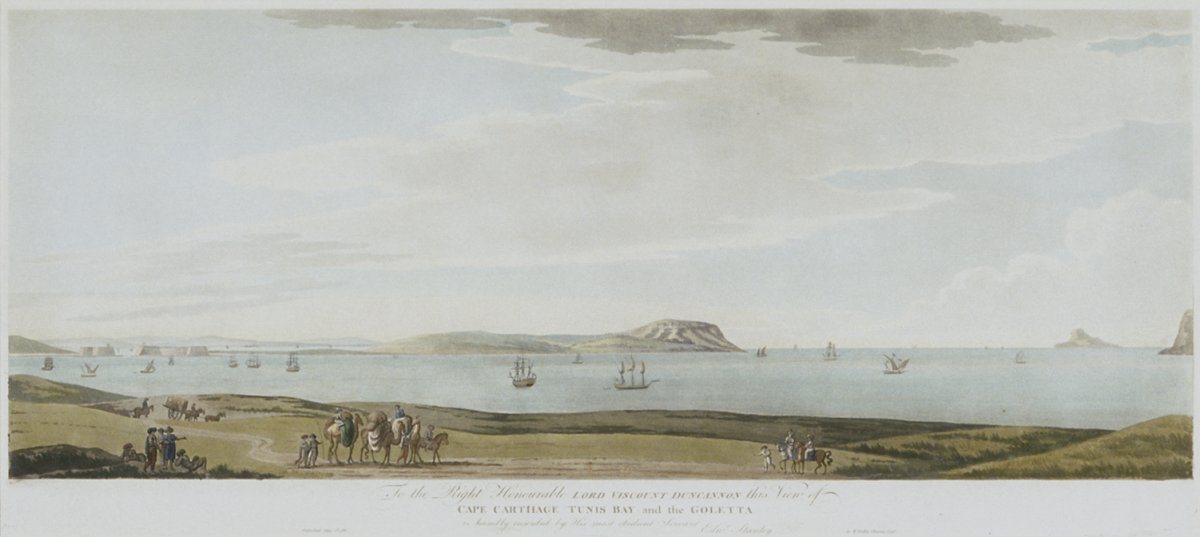Cape Carthage, Tunis Bay and the Goletta

-
About the work
- Location
-
Country: Tunisia
City: Tunis
Place: British Embassy
This aquatint captures a tranquil view over Cape Carthage, Tunis Bay and the Goletta. Scattered figures on camels and horseback are dotted in the foreground, while ships sail in the distance, designating the importance of the bay as a centre for trade in the 18th century.La Goletta was the strongest marine city in Tunis, located on the shore of the Gulf of Tunis. It had originally been conquered by Carlos V in 1535 and transformed into a fortified town and prison under the supervision of Spanish soldiers. Its location was key especially for the Ottoman Empire that was expanding its territory throughout the Mediterranean.This print was published in 1786 in Edward Stanley’s 'Observations on the City of Tunis and the Adjacent Country'. The British writer and traveller remarked that the African coast was ‘one of the finest and most fertile countries in the world’. His observations touch on the customs of Tunis’ inhabitants, aspects of trade and market, distinguished architectural features noticed in places such as coffee houses and the Bazaar as well as the Spanish-Turkish rivalry for the dominance of Tunis following a decline of the local Berber dynasties in the 15th and 16th centuries. -
Explore
- Subjects
- horseback, cart, topography, landscape C18th, seascape/coastal scene, camel, horse, bay, man, woman, road, ship
- Materials & Techniques
- aquatint, colour aquatint
-
Details
- Artist
-
Edward Stanley
- Title
- Cape Carthage, Tunis Bay and the Goletta
- Date
- published 1 May 1786
- Medium
- Colour aquatint
- Dimensions
- height: 40.00 cm, width: 81.50 cm
- Acquisition
- Origin uncertain
- Provenance
- Foreign & Commonwealth Office (British Embassy, Tunis)
- GAC number
- 17672